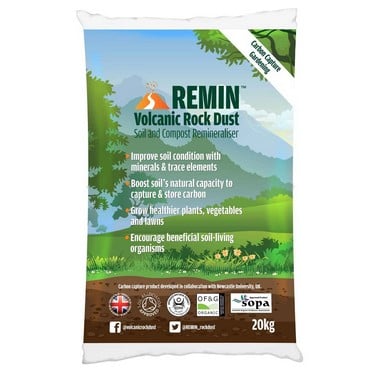Feed & Fertiliser
Feeding with Fertilisers
There’s an old saying – “feed the soil, and the soil will feed your plants”. It’s so true because just as we humans need vitamins and minerals in our diet for long term health, plants have requirements of their own so that they can grow up big and strong. Often there are not enough nutrients existing in the soil as through growing we keep taking out without any naturally being put back in. So there is a need to feed! By applying fertilisers you’ll be topping up the soil to help keep it full of nutrients.
A Quick Lesson In Science!
Don’t panic, unlike school back in the good old days, this will be painless we promise! We thought it would be good just to cover some of the basics about what the soil and plants need in their diet. In short there are the ‘Big 3’ – Nitrogen (N), Phosphorus (P) and Potassium/Potash (K) - a bit like ‘meat and two veg’. Then there are minor nutrients elements. Various plants need these minor nutrients in minute quantities although they are still important to the plant. Think of these as vitamins and if a plant needs more of a specific minor nutrient element then it is usually applied as a specialist fertiliser. Here’s an easy guide to all nutrients and how they help plant growth:
Soil Nutrition
|
Major Nutrients |
Deficiency System |
How They Help |
|
Nitrogen |
Stunted growth; pale or yellowish leaves |
Fuels growth and photosynthesis |
|
Phosphorus |
Blue-tinted leaves; low yields |
Promotes healthy roots and fruits |
|
Potassium, potash |
Leaf mottling; low yields of small fruits |
Boosts nitrogen; sustains health |
|
Calcium |
Die back; fruit disorders |
Adjusts acidity and nutrient access |
|
Magnesium |
Dead leaf patches; early leaf drop or tinting |
Vital for growing and for plants to make the sugars and starches that they need |
|
Minor Nutrient |
Deficiency System |
How They Help |
|
Iron |
Pale leaf patches; bright green veins; leaf rolling |
Helps plants absorb nutrients |
|
Manganese |
Pale leaf patches; bright green veins; leaf rolling |
Supports the action of iron |
|
Boron |
Rough fruit/leaf patches; brown hearts in vegetables |
Helps plants absorb nutrients |
|
Copper |
Young leaves or shoots wilt and die off |
Improves general nutrition |
|
Zinc |
Distorted leaves and shoots; brown buds |
Balances growth processses |
What Are My Soil Needs?
The degree of acidity or alkalinity of the soil is measured by pH. This is an important factor in the availabilityof soil nutrients to plants and helps us to know what needs replenishing to help the plants to thrive. The pH scale runs from 1.0 (acid) to 14.0 (alkaline) and as it’s very easy to get bogged down in the technical side of soil pH, it’s best to remember that most vegetables thrive on a soil which has a pH rating of neutral (pH 7 is chemically correct, but for gardening purposes 6.5 is considered neutral) or slightly acid.
Test your soil with a Soil Testing Kit and if you find your readings show your soil is too acidic, you can add Garden Lime to bring the level up; alternatively, if the test reveals the pH is high and therefore the soil is too alkaline, you’ll need to add sulphur or plenty of fertiliser. It’s much rarer that a soil is too alkaline to grow vegetables than too acidic.
By working out your deficiency need you can weight your nutrient requirement accordingly. The N:P:K ratio on packets will help you to choose the right fertilizer . If the ratio weighting is equal on the packet, it is a general purpose fertilizer and will aid all round growth. If it is higher in nitrogen it will encourage leafy growth; higher in phosphorus it will encourage root development; higher in potassium it will encourage fruit and flower production.
It is worth pointing out that of all the nutrients it is nitrogen that is the main one for growth because it is vital to the production of leaves which in turn powers the plant’s growth. Therefore the more leafy growth a plant produces the more nitrogen it will require. Unfortunately nitrogen has the shortest life in the soil so concentrate on this one in particular, applying in stages through the growing season. Use this guide for crops to help you.
- Very High Nitrogen Requirement = Brussel Sprouts, Cabbages and Rhubarb
- High Nitrogen Requirement = Beetroot, Celery, Leeks and Spinach
- Medium Nitrogen Requirement = Broccoli, Calabrese, Cauliflower and lettuce
- Low Nitrogen Requirement = Asparagus, Runner Beans, Parsnip, Swede and Onion.
- Very Low Nitrogen Requirement = Carrots and Radish
- No Nitrogen = Peas and Broad Beans
For more information on feeding your soil & plants see the Feeding section in Growing Advice.

























